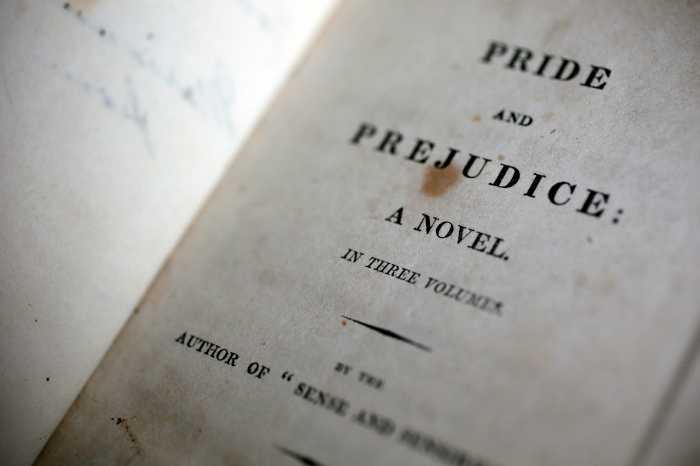By Luz Lancheros, MWN
The second season of ‘Succession,’ HBO’s phenomenon and its best series so far, shows what silent luxury entails, a category fit only for the few. Roman Roy, the sarcastic youngest son of Logan Roy – played by Kieran Culkin – mocks the attire of his brother-in-law, Tom Wambsgans (Matthew MacFadyen) by going brand-name in a Moncler vest and mimicking the class where the family moves. “Nice vest, how fluffy. What’s it stuffed with, your hopes and dreams?” Roy asks him. And the fact is that the richest people have never needed validation: their attire speaks for them and needs neither logos nor ostentation, only good materials and codes that are noticed among connoisseurs.
This is what costume designer Michelle Matland knows perfectly. And that is why she has involved brands such as The Row (of the Olsen twins), Max Mara, Tom Ford and Gabriela Hearst, among others, to dress the characters of this family saga. Discreet tones, impeccable cuts, luxurious materials… Nothing we haven’t seen from the most powerful families on the planet. In the case of the series, even Matland has ventured to test brands requested by the same people, as in the case of Sui Studio, which has popularized the wide pants of Siobhan Roy (Sarah Snook), inspired by figures such as Katharine Hepburn and Marlene Dietrich.
When it comes to men, there are brands like Lanvin. And going towards the hierarchies, women like Gerri (J. Smith-Cameron), even appear with pieces by Oscar de la Renta and Max Mara (she has been compared to Nancy Pelosi, wearing an identical coat armor), but following the code of the richest.
“The Roy’s are anti-bling. They don’t need to present themselves in that way. They choose luxury, but brands don’t count. Obviously, they will buy expensive things, but they don’t need to pose. It can be a $2,000 sweater but it doesn’t need a logo on it to represent where it comes from. The Roy’s know where they come from,” Matland told Town and Country magazine.
Obviously, this applies to people of that class in real life: few exceptions get to be magazine covers, or stand out for their eccentric fashion sense, like Daphne Guinness. But, generally, they have other codes. And this is where they come from.
Zuckerberg’s T-shirt is made by Brunello Cucinelli, an Italian luxury brand that makes these pieces for $400 or so, and also appears in the series. For his part, Elon Musk appeared on ‘SNL’ with a Givenchy suit that costs $4,000. Both pieces comply with a basic premise: discretion, of which the French sociologist Bruno Remaury already spoke in his 2009 essay “Luxury and American Cultural Identity,” where he showed that as the middle class acquired more goods and more symbols of ostentation, the upper classes sought to differentiate themselves in more discreet and recognizable ways only among people who could acquire the same goods. This is what is called “silent luxury,” where fashion is not shown as purchasing power, but as a “natural” product of it and differentiated by its exquisite quality.

“The rich have never needed to show ostentation. They flaunt because it is part of their everyday life. Ostentation has always been related to nobility and royalty, to people who in those times (from the Victorian era on) had the means to do it, and the others didn’t. That changed with the Industrial Revolution. It changed the social structure, there were no longer rich and poor. The working class arrived and found itself with more purchasing power and began to acquire things that people with money have historically had,” Jeniffer Varela, MA Fashion Studies at Parsons and fashion researcher, explained to Metro.
“For example, in the 18th and 19th centuries, you couldn’t buy a whole set of porcelain, so you bought just one piece. It would be the equivalent of buying a Chanel perfume when not being able to buy the handbag. The Industrial Revolution is about showing what I have through what I can buy. That’s when authors like Thorstein Veblen talk about conspicuous consumption that is made with the intention of showing that I bought it because I have the means to do so.”
Luxury has several connotations, but there are common patterns such as millenary techniques and materials of the highest quality, as well as specialized techniques, which are used by fashion houses.
“Luxury doesn’t always imply that there must be logos, which come from the 90s, Dapper Dan and hip hop. But before that, it didn’t exist. That’s why there are other brands like Dior’s New Look and, currently, Brunello Cucinelli or The Row. There are no logos, but they are luxury. Luxury is silent. If I have these brands, the rest of the people don’t know it, but those who buy them do. The rich do not need conspicuous consumption, because we know how much money they have. They wear clothes that communicate to their peers, not to us,” the expert added.
Why “simple” dresses?
The fact that Steve Jobs, Elon Musk and Mark Zuckerberg dress this way has its double message.
“They have never been at the level of other billionaires, but they want to be aspirational, to send the message to young entrepreneurs that anything is possible with desire. The Zuckerberg T-shirt is known by very few. It speaks to people of simple luxury, but it is also a message to those who want to follow him to generate identification,” Varela stated.
Both in ‘Succession’ and in the celebrity magazines, you will find patterns. Quilted jackets, beige coats, caps, khaki pants, fluffy vests. Why do they seem to be so common?
“Vests are a practical way to keep warm in winter to layer over a stylish coat. I imagine that’s the appeal of this vest, popular among many brands. In ‘Succession’s’ Argestes episode, Kendall naturally wears a Brunello Cucinelli jacket. She doesn’t need to convince anyone about her money. Instead, you see Tom, totally wannabe, in Moncler, very expensive, too, but it has a big logo. They are categories of use. Moncler made a collection with Valentino and Simone Rocha extremely ostentatious and there are also categories in luxury,” emphasizes Varela.
































